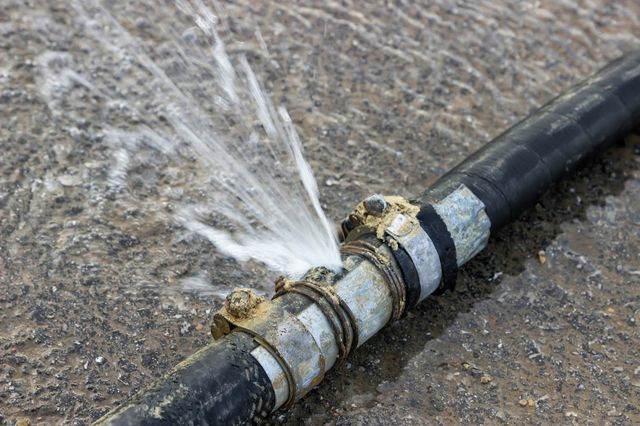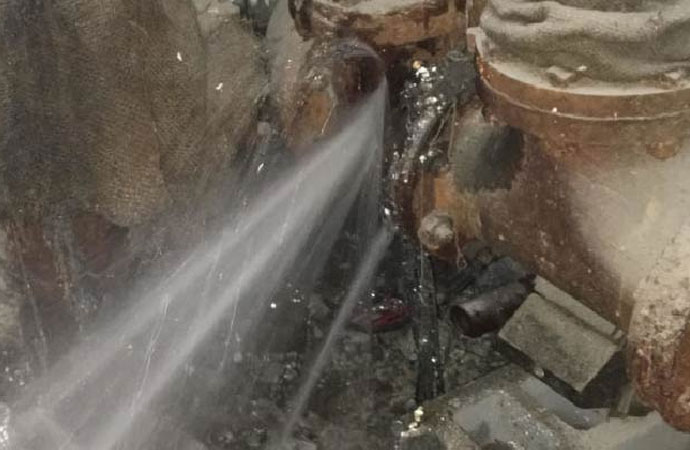Essential Things You Need to Know About Septic Tank Maintenance
Essential Things You Need to Know About Septic Tank Maintenance
Blog Article
The author is making several great points related to The Do’s And Don’ts When Water Floods Your Home in general in this great article below.

What should you do if a water pipe bursts in your residence? The longer you wait, the a lot more serious the damage that can take place to your building. For these factors, you need to find out just how to act in the event of a burst water pipeline.
Turn off the Main Waterline Shutoff
The first thing to do? Shut the shut-off valve. Seek the regional shut-off valve to switch off the water in one certain area only. If you don't recognize where the localized shut-off shutoff is, choose the main water line shutoff and also turn it off. This action will remove the water right away in your whole residence. Typically, the major valve is located outside the house next to the water meter. If it's not there, you can additionally find it in 2 places: in the cellar at eye level or the 1st flooring on the ground. Generally, building contractors put the shut-off shutoff in the main ground degree restroom or appropriate beside it.
Call Water Damage Reconstruction Pros for Help
After shutting the water resource, call the specialists for help. With their professional assistance, you can protect against a lot bigger water damages consisting of warped baseboards, loose tiles, or damaged frameworks.
Record the Damage For Insurance
While you're waiting for the pros to show up, get some documentation of the damages triggered by the wayward pipeline. Do close-up shots of the harmed belongings as well as spots.
Salvage Points That Can Be Saved
Once you're done taking images, check out the harmed products and take out the most vital ones from the pile. Dry them off in a dry/warm place away from the broken location as well as attempt to maintain them as long as you can. Drag as much moisture as you can to the material so it can begin to dry.
Begin the Drying Refine
You require to begin the drying procedure asap. Fortunately, the water from your waterlines is currently tidy so you do not have to fret about sewer water. The flowing water might have disturbed the dirt and particles in your floorboards and also rugs. In this instance, placed some handwear covers on as well as start some troubleshooting. Use pails to discard out the water. Remove as much water as you can from the surface areas with old towels. Turn on an electrical fan or open your home windows to promote air blood circulation. These steps will certainly quicken to completely dry and prevent mold and also mildew growth.
Professionals are the only individuals certified to evaluate appropriately and take care of the burs pipes as well as succeeding damage. As always, pipelines don't just instantly burst out of heaven. They usually give silent warnings like bubbling paint, water spots. Strange sounds in the plumbing, caving ceiling, musty odor, or peeling off wallpaper. Remember of these indicators as well as do some safety nets so you can nip any issues in the bud.
What should you do if a water pipeline ruptureds in your house? For these reasons, you require to learn how to act in the event of a ruptured water pipe. After shutting the water resource, call the specialists for help. With their professional aid, you can protect against much larger water damage consisting of deformed baseboards, loose floor tiles, or damaged structures. Fortunately, the water from your waterlines is currently tidy so you don't have to fret regarding sewage system water.
How to Handle a Burst Pipe and Minimize Damage
Steps to Take Ahead of Time
If you own property in an area that experiences cold weather, you need to be aware of seasonal maintenance tasks that will help you protect your property as the weather changes each year. One of the most important steps is to winterize your pipes to ensure they won't freeze or burst when the temperature drops. This includes action items like insulating any exposed pipes, detaching garden hoses and covering outdoor faucets. If the weather gets cold enough, you may even consider leaving a faucet dripping or opening cabinet doors during the coldest parts of the day.
No matter how prepared you might be, accidents and emergencies still happen. You'd be wise to set up a savings account specifically for your property so you have a "rainy day" fund set aside for unexpected expenses. All homes—regardless of age, location or condition—will inevitably need some form of emergency repair.
Steps to Take for Frozen Pipes
A frozen pipe will not necessarily burst, so if you can catch a frozen pipe early on, you could save yourself a major headache. When your area experiences frigid temperatures, be sure to check your plumbing and keep an eye out for warning signs like faucets only releasing small amounts of water or toilets not refilling when flushed. If you do run into one of these issues, you're likely dealing with a frozen pipe.
If this happens, your first step should be to cut off the water supply to that section of the plumbing. Expanding and freezing water can quickly cause damage. Even if the water supply is shut off, you will likely still deal with some leaking from the water that defrosts after the pipe has thawed. Be prepared with a mop, bucket and/or towels to quickly soak up any excess water.
In order to thaw a frozen pipe, you can use a space heater, infrared or incandescent heat lamp, or even a hairdryer to warm up the frozen area. Heat tape is also an option and should be used according to manufacturer instructions. Do not use any sort of open flame to thaw frozen pipes, as it poses a major fire hazard and can damage your pipes further.
Steps to Take for a Burst Pipe
Water damage claims are the second most common insurance claim in the U.S. When you're dealing with a frozen pipe, the water continues to expand as it freezes, which creates pressure that can cause a pipe to burst. When this happens, the crack or leak in the pipe allows water flow from the pipe to enter your home where it shouldn't. If a pipe does burst, you need to act quickly to mitigate property damage and repair cost.
Your very first step should be to shut off your main water supply to minimize flooding—typically the most expensive damage to address. Once you've shut off the water supply, make sure you identify the entire area that has been impacted by the leak. Remove as much water as possible—as quickly as possible—using a mop, sponges, towels or a shop vacuum or wet/dry vacuum. To prevent long-term damage due to moisture build-up, run a dehumidifier or fan in the affected area. Contact a licensed plumber to ensure the pipe is correctly repaired before running any water to that section of the home again. Burst pipes and the associated water damage are something you absolutely want to avoid as a property owner. If you've had to learn your lesson the hard way, don't let yourself get caught in a similar situation during the next spell of cold weather. The best way to deal with frozen or burst pipes is to prevent them in the first place—proactive winter maintenance will save you time, money and a whole lot of stress.

Do you really like reading about What To Do And What Not To Do When Dealing With Water Damage? Post a comment further down. We'd be glad to listen to your thinking about this blog. In hopes to see you back again before long. Kindly take a moment to share this article if you liked it. Thank you for your time. Don't hesitate to come visit our website back soon.
Report this page